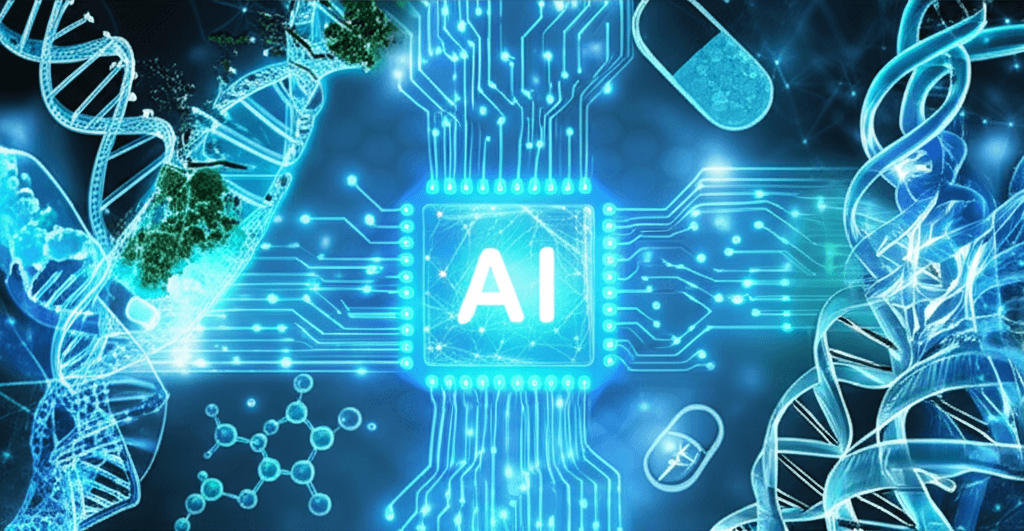AI Unlocks Nature's Genetic Code, Revolutionizing Climate and Drug Development
AI deciphers Earth's hidden genetic code, predicting millions of protein structures for groundbreaking climate and health solutions.
June 25, 2025

A transformative global initiative is harnessing the immense, unmapped genetic data from the world's biodiversity to power a new generation of artificial intelligence models. This convergence of genomics, biodiversity, and AI is poised to revolutionize responses to climate change and usher in a new era of accelerated drug development. Through novel partnerships, AI-driven protein databases are expanding at an unprecedented rate, offering scientists a deeper understanding of life's fundamental building blocks. This synergy creates a powerful feedback loop: as more genetic information is gathered from diverse ecosystems, AI models become more adept, enhancing our ability to protect these environments and advance human health. The core of this progress lies in AI's capacity to predict the three-dimensional structure of proteins from their amino acid sequences, a feat that once required years of laborious and expensive laboratory work.[1][2][3][4]
Central to this effort are vast, open-access databases of AI-predicted protein structures.[5][1] Key among them is the AlphaFold Protein Structure Database, a collaboration between Google DeepMind and the European Molecular Biology Laboratory (EMBL), which contains over 200 million structure predictions.[5][1][3][6] Another crucial resource is the ESM Metagenomic Atlas, developed by Meta AI, which has expanded the known protein universe with over 600 million structures derived from metagenomic sources.[7][8] Metagenomics involves sequencing DNA directly from environmental samples like soil and water, bypassing the need to culture organisms in a lab.[9][10] This technique unveils the "dark matter" of the biological world—proteins from microbes that have never been isolated.[7] AI models, specifically large language models like ESM-2, are trained on massive datasets of protein sequences, allowing them to learn the "language" of biology and predict protein structures with remarkable speed and accuracy, sometimes up to 60 times faster than previous methods.[11][7]
The implications of this technology for addressing the climate crisis are substantial. The newly discovered proteins include a vast array of enzymes, which are biological catalysts for critical environmental processes.[11][12] Researchers are now mining these AI-generated databases for enzymes capable of breaking down plastics, capturing atmospheric carbon, or improving agricultural nitrogen fixation to reduce reliance on synthetic fertilizers.[1][9] By understanding the precise structure of an enzyme, scientists can re-engineer it for greater efficiency or stability in industrial applications.[13][14] For example, proteins from extremophiles—organisms adapted to harsh conditions—could provide robust enzymes for bioremediation or sustainable manufacturing.[12] This AI-driven approach accelerates the discovery of green chemistry solutions, moving from serendipitous finds to targeted searches across billions of potential candidates.[7]
In parallel, this wealth of protein data is dramatically accelerating drug discovery and development. A foundational aspect of modern medicine is understanding how a drug molecule interacts with a specific target protein to combat disease.[2][15] With access to hundreds of millions of high-fidelity protein structures, including those of human pathogens, researchers can perform rapid, large-scale virtual screening of potential drug candidates.[4][16] This computational approach, which can now model interactions between proteins and other molecules like DNA and RNA with significantly improved accuracy, helps identify new drug targets and design more precise medicines with fewer side effects.[17] It is a crucial tool in the fight against antibiotic resistance, allowing scientists to uncover novel proteins in microbes that could serve as targets for new classes of antibiotics.[3] The free availability of these powerful tools is also democratizing research, empowering smaller labs and institutions worldwide to participate in the search for novel therapeutics.[18][19]
In conclusion, the powerful fusion of global biodiversity research and artificial intelligence is creating a new engine for scientific and technological progress. The exponential expansion of AI-predicted protein databases represents a fundamental leap in our collective biological knowledge, translating the hidden genetic codes of nature into tangible, three-dimensional forms.[6] This provides the raw material for groundbreaking solutions to climate change and disease. As partnerships between tech companies, academic institutions, and global biodiversity initiatives continue to grow, these AI models will learn from an ever-expanding library of life.[20][21][22] The continued investment in these programs is critical to unlocking the full potential hidden within Earth's vast biosphere, paving the way for a more sustainable and healthier future for all.
Sources
[5]
[6]
[7]
[8]
[11]
[14]
[15]
[16]
[17]
[18]
[21]